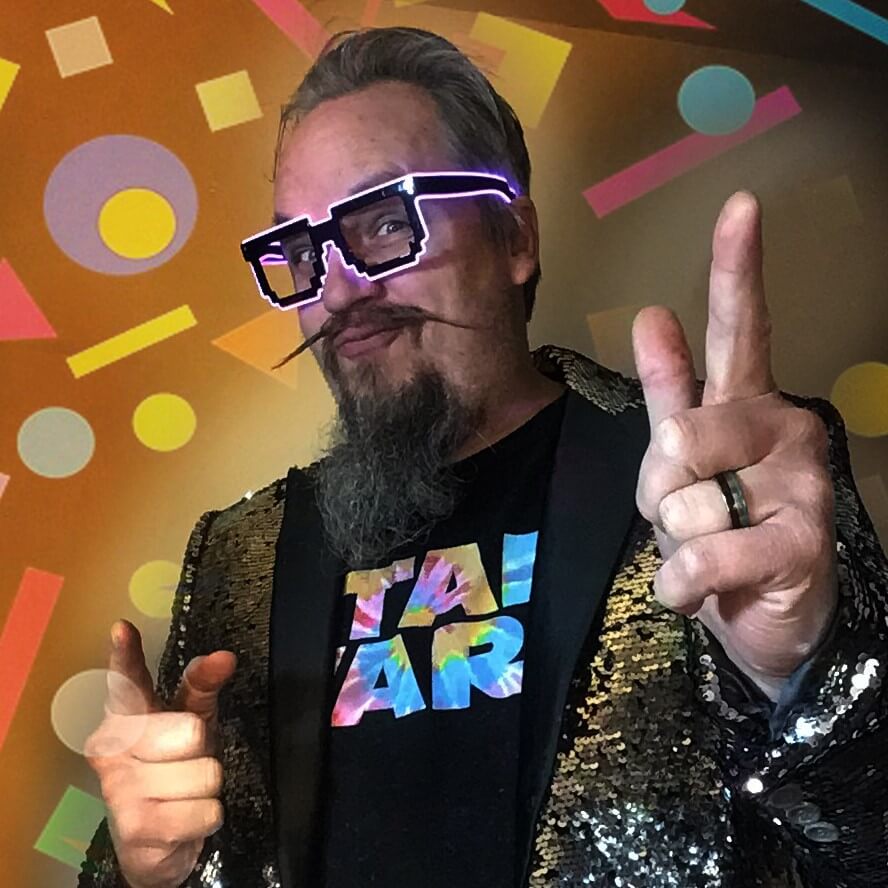Case Study
Launching into a new industry
George Berlin Studios
“Brad manages to be right there with you in your business issues, while also remaining distant enough to help you see that the challenges you’re grappling with aren’t as big as you think they are.”
~ George Berlin

George Berlin Studios is in the business of delight. Delight on a grand scale. The studio creates “out of this world” public art experiences that bring people together—think 3D billboards, multi-story moving murals, and indoor digital tapestries. Their designs have been described as music for your eyes.
How did you hear about Anchor Advisors?
I met Brad through a friend about 10 years before we officially started working together. At the time, we had a few informal consulting conversations and agreed to keep in touch. Fast-forward to 2018, and, after 20 years in motion design, I found myself at a turning point in my career. I’d recently discovered projection mapping, a little bit by accident, and was incredibly excited about the possibilities. I’d found something I wanted to do all the time, but I had no idea how to get paid to do it.
Because of the nature of the industry and the size and stature of the players, I knew I needed a savvy business advisor. I couldn’t freelance my way into this world without some serious guidance. So, I reached out to Brad.
What were the initial goals of your work with Anchor Advisors?
At the time, the projection mapping industry was still relatively new to me, so one of the first things we set out to do was understand the market. What’s the landscape? Where am I now and what’s the route to get where I want to go? After we had a deeper understanding of the market, we started building the ladder to get me from point A to point B (and C and D).
What’s different at George Berlin Studios because of your work with Brad?
Before Brad, I chose projects almost entirely based on their creative value. Brad understands the personal and professional importance of creatively interesting projects, but he’s also there to ask me, “are you gonna make money on that project, George?” Today, I have a far more balanced portfolio, and it’s because of Brad.
Brad has also helped me shift how I see myself and my role at the studio. I used to see myself as the person who does the things; Brad’s helped me see myself as a designer, which is a really important distinction, because the former is always going to be a dead-end. In construction, eventually there will be people who are younger and stronger than you. Technical skills aren’t that different—there are people training right now who, in a few years, will have more sophisticated technical skills than I do. I can’t keep up with that. But good design will always be good design. To that end, Brad’s helped me create infrastructure and systems to grow and protect my creative time, which I now see as my number one asset.
What’s your favorite thing about working with Brad?
Sometimes Brad says things like, “that’s not going to lead you where you want to go.” He can say that because he knows where I want to go. Brad works with so many different types of people and professionals, so the same advice won’t work for everyone – what I want out of life is likely quite different than what a software engineer or Chief Technical Officer wants out of life. Brad takes the time to really understand his clients on a personal and professional level and is deeply invested in our success, however we define it.
Your biggest take-away so far?
Early on, we focused on learning how to fail quickly. You don’t have to do a cannonball into the pool to find out it’s cold. Having an efficient process for eliminating ideas is incredibly helpful, especially when you’re at a turning point in your career and trying to decide which path to take.
If you had to describe Brad’s services in just three words, what would you say?
Invested. As in, he’s invested in my success. Thorough. Brad’s assessment of who you are and what you want is really thorough and guides everything else that he does. Understanding. He has a keen understanding of people and relationships.